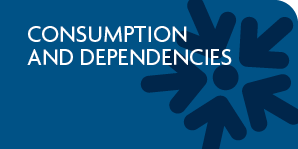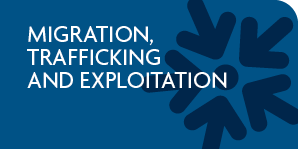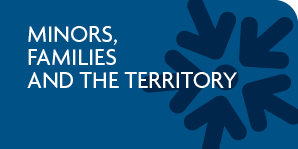
Projects
PROJECTS
AREA OF
Minors, families and the territory
|
URBE 
The project 'Urbe' is aimed at minors, within the entire territory of the City of Rome, coming from extreme poverty reported by municipalities, unaccompanied minors in residential, nomadic children and children involved in the criminal circuit. rn The constituent element of the project is the provision of the "care package", ie the assignment of goods or services useful to oppose, where possible, the causes related to poverty and the potential risk factors associated with further impoverishment. rn The identification of the contents of the 'care package' is therefore essential. It must be congruent with what are the problems and resources of the child taken into care (and his/her family, if any), and functional for help leaving the situation of marginalization. It must therefore be deeply understood and shared in the first place by the recipient, but also on the social network, and the acquisition of skills aiming towards autonomy. rn One of the first criteria that is followed for the delivery of the 'care package' is to take care of cases where a realistic chance of developmen is inferred: great relevance is given for this reason the reading and the analysis of the condition of poverty with regard to the minor, trying to understand how this can be an obstacle for his/her development; then one can think of interventions that are congruent with those of hie/her problems and resources. rn
rn NAME OF THE PROJECT rn URBE- Urban network to contrast poverty rn
rn Italian minors and non-accompanied foreign minorss who face poverty and extreme poverty. rn
rn METHOD OF FINANCING rn Funded by the Lazio region - Regional Directorate for Social Policies, Autonomies, Safety and Sport, the project is implemented in partnership with the cooperatives Il Cammino, Parsec, Ermes and Eureka I. rn The project started its operations in August 2014 and will conclude in August 2015. rn
rn AREA OF INTERVENTION rn City of Rome rn
rn BRIEF HISTORY rn In the light of new changes in the social and economic system in Italy, which show that today the risk of falling into poverty is very strong, the project implements the answer that the Parsec Cooperative provides to people with greater social fragility. rn On a more complex level, it is important to compare the different factors that lead to exclusion, by reference to the concept of "social vulnerability", as provided in the event of "unforeseen or sudden difficulties", he/she slides towards progressive paths of economic and relational impoverishment, to irreversibly affect a person's capacity for social, physical and mental survival. rn Concepts such as weakness or discomfort allow us to have a more dynamic approach to poverty, enabling us to look to the interventions with a view not only to restoring social emergencies, but also, in some way proactive, in constructing a support network and an empowerment of the individual subject. rn
rn OBJECTIVES rn The overall objective is the articulation of pathways needed for the release from poverty. rn The project aims to deliver a total of at least 42 care packages (the maximum value of 2.000,00 euro each). rn Short term goals: rn
rn Long-term goals rn
rn Another goal, parallel to the take-over and limited to the City of Rome, is investigating and understanding the characteristics of child poverty, which describe some cases managing public services, defining them according to the severity of the same and to different possible types of interventions of contrast put in place. rn
rn METHODOLOGY OF INTERVENTION rn - Contacts with the agencies and referrers collecting data organized in the form of board evaluation; rn - Interviews with the person sent for analysis of the need and the explanation of the project rn about the opportunities available (1-3 talks are anticipated); rn - A questionnaire on the knowledge of the situation of the person (Annex 2); rn - Management of a database of services offered by the project is that the existing network; rn - Monitoring reports; rn - Identification of the tutor; rn - Processing of individual project; rn - Identification of the care package for up to € 2,000.00; rn - Contact management with macro actions of the project; rn - Meetings of the team; rn - Team monitoring with the tutor; rn - Networking meetings to maintain a stable flow of information and emethodological exchange with all the various facilities involved in the network, in order to build alliances in individual concrete individual projects, defining roles and functions of each subject and build and strengthen a shared working method. rn
rn TOOLS AND ACTIVITIES rn The central figure of the project and of taking care is the tutor. His/her task is to support and monitor the individual project and check the status of achievement of the objectives, also putting special care into the existing network and the projects already underway, with the aim of creating shared, consistent and measurable interventions. In addition to the work of accompaniment, follow-up actions with the user and with the services is also foreseen. rn The functions of the tutor are: rn - To promote the connection between the control room and the services implemented by the project; rn - To facilitate the use of the services of the project and of territorial resources already present; rn - To facilitate the creation of conditions that promote the exit out of poverty; rn - To encourage continuous discussion on the needs of the person in care; rn - To facilitate the creation of conditions that promote independence; rn - To act as a link in the whole project rn
rn NETWORK AND TERRITORY rn The activities are jointly conducted by Cooperatives Il Cammino, Parsec, Ermes and Eureka I, in close cooperation with the Municipalities of Rome Capital City, the Department for the Promotion of Social Services, Subsidiarity and Health and with the Centre Minor Justice of the Lazio Region. rn This collaboration aims to better intercept the needs of children followed by these services and share the criteria for disbursement of the care packages provided. rn Other project partners are the various organizations working in the different territories in taking care of the children in need, such as with residential facilities, support interventions and accompaniment. rn
rn
rn
rn CONTACTS AND PROCEDURES FOR ACCESS rn For information, please contact the centre at (0039) 0686209991 and ask for Ms. Daniela Recchia, responsible for the project. rn
rn ORGANIZATIONAL STRUCTURE rn The project is managed by the Cooperatives Il Cammino, Parsec, Eureka I and Ermes and by ASIS Association. rn There is a contact person for the project, a manager, a person in charge of monitoring and assessing, and tutors identified by the bodies, in sufficient number to take in charge the cases; all the staff meet regularly to discuss the progress of the project, the lines of action, the means of detection and the problems that emerged. rn
rn EVALUATION rn In order to measure the outcomes of the project, in a more systemic way, we will be evaluating each intervention of each specific action that is the totality of the operation, in order to be able to read what activities were able to improve the conditions of the population target. Therefore, the evaluation model is based on two correlated levels: the first will measure a change in the target population at the time of entry and at the time of the project, while the second will measure changes that the project has brought in citizen welfare system. rn
|






